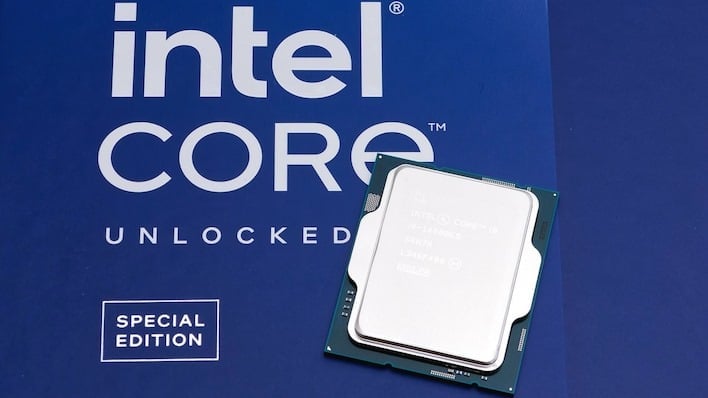
Remember that story where some people were suffering stability issues while gaming on Intel 13th and 14th-generation CPUs? Despite many of the errors blaming the GPU, NVIDIA pointed the finger at Intel back in April. It’s been more than six months since the issues began, so after a pile of software updates as well as raft of BIOS updates from Intel’s partners, the issue is resolved, right? Well, no, actually. Sadly, a significant portion of Intel 13th and 14th-generation CPUs are still struggling with major stability issues.
While those practices may exacerbate the issue, it turns out that these CPUs can have stability problems even on workstation motherboards that enforce tight power limits, and which use relatively low-speed RAM configurations. Australian game developer Alderon Games has released a statement with some pretty strong wording that claims “Intel is selling defective 13-14th Gen CPUs.” The game company says that due to “significant problems” with Intel CPU stability, the company is swapping all of its servers to AMD.
Alderon Games is a relatively small developer who primarily operates a multiplayer survival game called Path of Titans. Wendell from YouTube channel Level1Techs is performing a deeper investigation into these problems, and speaking to him, Alderon laid out its hardware platform for the servers which includes consumer Core CPUs and server-class motherboards from companies like SuperMicro and ASRock Rack. It’s easy to say “well, should have bought Xeons,” but there’s no particular reason that this or any workload should cause a whole system to crash. We’re not talking about intermittent crashes from memory errors here, but specific, repeatable crashes across many workloads.
The game studio told the interviewer that the crashes caused by Intel CPUs have lost the company over $100,000 purely in terms of lost players, due to frustration with crashing multiplayer servers. Alderon, along with another (unnamed) game operator, both allowed Wendell to dig into their telemetry information where he found a wealth of hard data. His conclusions? Possibly as many as 50% of Intel 13th- and 14th-gen Core i9 CPUs are faulty—which is more generous than the “nearly 100%” failure rate apparently observed over time by Alderon.
Nearly 98% of crashes have been in these Intel CPUs.
But okay, you don’t want to take the word of a small game developer who could have an axe to grind. What about Digital Extremes? The Canadian developer of live-service mega-hit Warframe has also posted complaining about the issue. The company says that it has observed a trend of crashes within the NVIDIA GPU driver, but these crashes aren’t being caused by the GPU, the game, nor the driver itself. Instead, these crashes are confined almost exclusively—on the order of 97%—to Intel Core i7 and Core i9 CPUs from the 13th and 14th generations.
The Warframe developer posted about the problem this past Tuesday, saying that even one of the company’s own employees was suffering this issue. Digital Extremes points to the Intel report that we covered back on June 20th, where Intel advises installing the latest BIOS update, and indeed, says that this seems to have resolved the issue for their employee. However, it’s well known that this doesn’t solve the problem for everyone.
If you’re still not convinced, how about Epic Games? The well-known creators of the Unreal Engine and developers of the game Fortnite have also put up a post about this problem. The Epic Games knowledge base post specifically concerns the game Fortnite and frequent crashes on recent Intel i9 CPUs. Epic’s guidance is interesting; the company mirrors the original tip we got from Kelt over at Falcon Northwest, which was to enable the “Intel Fail Safe” SVID behavior option. This is almost certain to resolve the stability issues, at least in the short-term.
Some users can work around these Intel CPU stability problems by adjusting the power delivery behavior of their motherboard; many boards have been updated with “Intel BaseLine” profiles that set power limits to the Intel-recommended values in the chart above, and that might work. Level1Techs found good success with some CPUs by disabling their E-Cores. Others have to resort to more extreme measures that hurt performance further, like drastically reducing their memory speed, manually capping CPU clock multipliers, or significant overvolting.
In the end, it’s clear that at least some of these Intel CPUs have a problem that goes beyond “out of specification operating conditions.” That’s a quote from Intel itself, who initially threw shade at motherboard makers and DIY builders as causing the problems. Now it seems like at least some portion of these Core i9 CPUs may have been defective from the factory. Research is still ongoing, but we hope that, whatever the outcome, Intel takes care of its customers who have ended up with defective or degraded CPUs.


